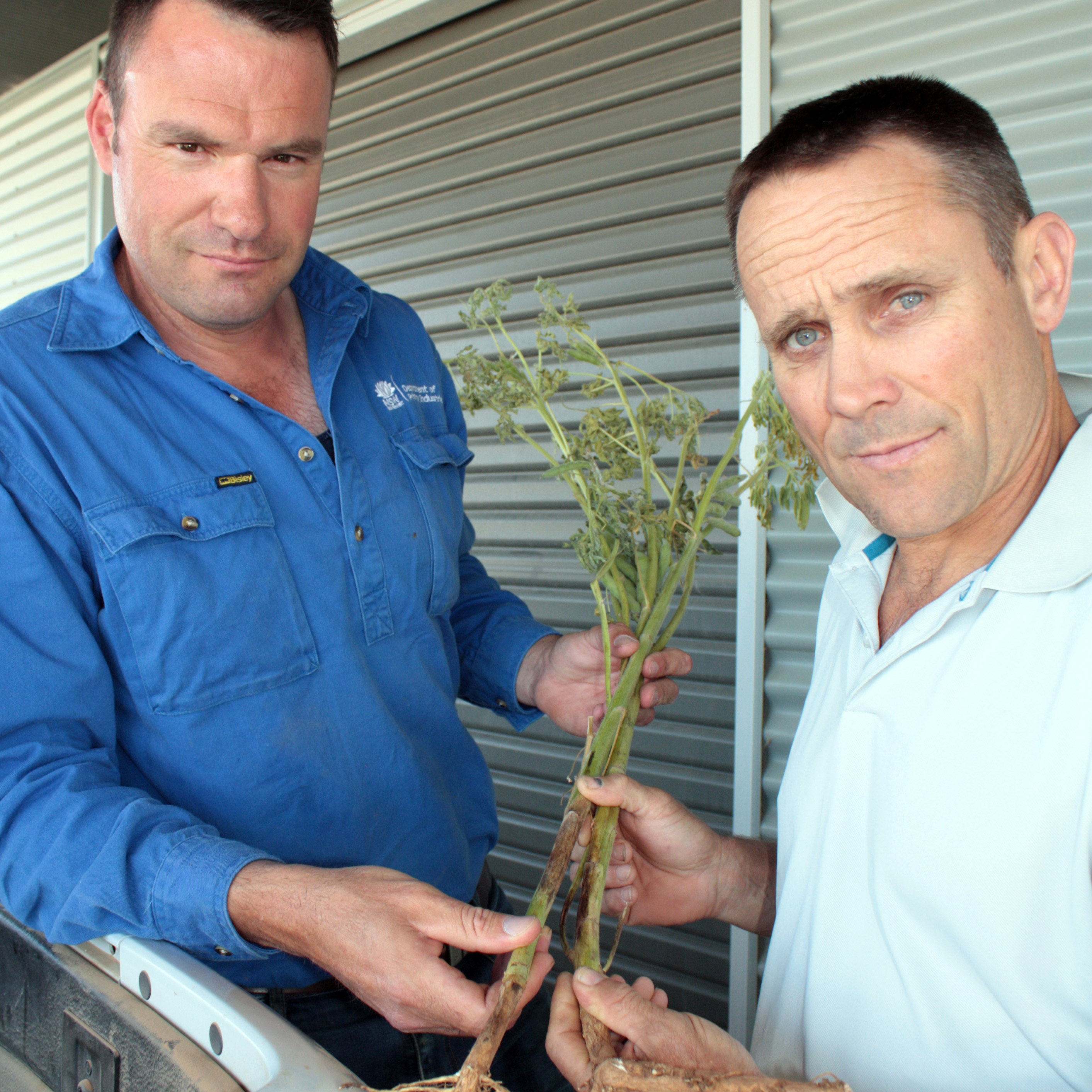Manage lupin risk to safeguard stock
NSW Department of Primary Industries (DPI) has alerted farmers to early signs of a toxic fungus which causes lupinosis, a disease which can lead to production losses and deaths when livestock graze infected lupin stubble.
A disease survey of commercial pulse crops across southern and central NSW detected the toxin-producing fungus, Diaporthe toxica, commonly called phomopsis, on lupin plants.
NSW DPI plant pathologist, Kurt Lindbeck, said a dry growing season meant moisture stressed plants were prone to early development of the fungus.
“Conditions this spring have created ideal conditions for phomopsis to develop,” Dr Lindbeck said.
“Most years we don’t expect to see the fungus in crops until late in the season after harvest and following summer rain.”
DPI livestock development officer, Geoff Casburn, said lupin stubble and grain are valuable food sources for livestock.

Kurt Lindbeck and Geoff Casburn, NSW DPI.
“Inspect lupin crops for signs of fungal infection – leopard spots on stems and pods which can’t be rubbed off and discolored seeds - crops with infected seeds should not be grazed,” Mr Casburn said.
“If infection levels are unknown, reduce the need for livestock to graze lupin stems as they are likely to contain higher levels of toxin.
“Choose paddocks with lupin grain, at least 40 seeds per square metre, and green weeds in stubble - livestock naturally select grain and green material which provide higher quality feed.
“Stock should be moved from the lupin paddock before green matter and grain runs out.
“Monitor stock daily and move them short distances to look for signs of weakness or listlessness, reduced appetite and jaundice - yellowing of the eyes and mouth.”
If lupinosis is suspected, producers should immediately move stock from the paddock, or cease feeding lupin grain, and contact a local veterinarian for diagnosis and management options.
Lupinosis leads to liver damage and loss of appetite, poor production and sometimes death in sheep and cattle.
A Primefact which offers the latest lupin grazing management information, with photographs for identification of infected plants, is available from NSW DPI offices and to download.
Source: DPI NSW

